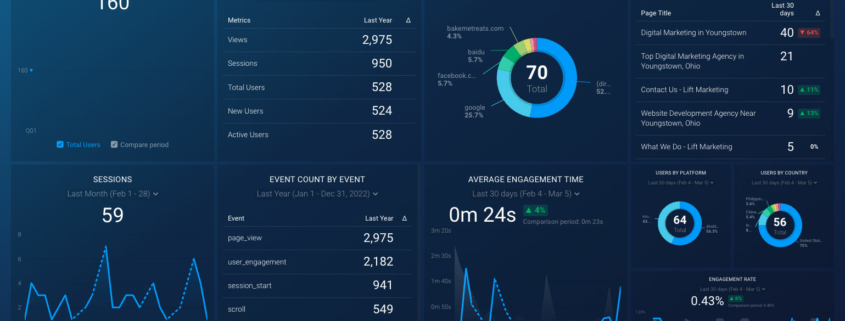What’s the Deal With Digital Marketing Conversion Rates?
While you probably have a general idea of what a digital marketing conversion rate is, you might not know why it’s important to your business. That’s why you’re here, reading this blog.
Learning about average conversion rates can be confusing — we get it. We want to help you launch your new product or service, so here are some foundations about conversion rates and conversion optimization.
What Is a Digital Marketing Conversion Rate?
Conversion rate is a key metric that measures how many visitors to your website convert into customers or leads. It measures the success of individual campaigns, web pages, and landing pages.
A high conversion rate means that more people are completing the desired action on your site, like signing up for an email list or opening an email you sent. It could be filling out a registration on your site or buying your product or service. A low conversion rate means fewer people are doing so; therefore, there’s room for improvement to make it easier for visitors to complete this task.
Math Time
There’s a formula for figuring out your conversion rate: the number of conversions divided by the total ad interactions tracked. Another way to say it is the total number of conversions divided by the total number of clicks equals your conversion rate.
You can also take it a step back BEFORE your conversions to see how enticing your ads are with click-through rate (CTR). The click-through rate is calculated by the total number of clicks divided by impressions. Measuring both the conversion rate and click-through rate helps determine where you’re hooking your target audience (and see what needs improvement).
Rates for Different Reasons
So, what’s a good website conversion rate? Great question. That number is between 2% and 5%. For ecommerce conversion rates, you want to be around 3.5%. Google Ads conversion rates hover around 5.3%. Landing pages should be around 11.5% and higher. When you get to a higher conversion rate than the average, your marketing campaigns are working.
The overall conversion rate for each site and each brand varies because each has a different purpose. For example, an ecommerce site’s goal is to have a number of visitors convert by making a purchase. A scientific study website’s homepage will contain more data to share.
Diving Into Digital Marketing Optimization
It doesn’t matter if you’re a CEO or marketing director, you should care about digital marketing optimization. This is a sort of catch-all or broad way to explain looking at how your digital marketing campaigns are doing overall, including looking at your conversion rate.
To optimize your online marketing strategy, you gotta know exactly how many people are converting to your website. I mean, the goal is to turn a potential customer into an actual purchasing customer, right?
Knowing this will allow you to set goals for yourself and measure the effectiveness of your marketing efforts. For example, if my goal is 1,000 visitors per month from social media, then I should track how many people convert into leads or customers after seeing my ads. More importantly, if I have no conversions at all, something is clearly not working, and I need to do something about it.
Improving Your Conversion Rate
Conversion rate optimization (CRO) is when you work to increase website visitors and get them to take an action like subscribing to email marketing lists, newsletters, or making a purchase. You can do this by creating a landing page (a page of your website dedicated to one call to action, including CTA buttons), specific headlines, or images.
If you don’t have a good conversion rate, it’s time to work on improving your website or campaign to maximize your return on investment (ROI).
Look into the following:
- Optimize campaign keywords and work on SEO (search engine optimization)
- Improving social media engagement
- A/B testing (using different versions of marketing campaign elements and seeing which one does better).
- Website functionality – does it have a great user experience?
- Pay-per-click (PPC) campaigns through Google Ads or pop-up ads
- Benchmark processes your competitors are using (keep an eye on them)
A Cool Tracking Tool
A neat way to watch how your visitors interact with your website is through a heatmap. It shows where the hot spots on your website are (what visitors are actually looking at).
As you may have guessed, heatmaps are color-coded. Warmer colors mean more clicks. If you have an area that’s cooler (with blues), audit that page for ways to improve.
Google Analytics also helps by tracking metrics from your sites and making reports with insights for your business. It’s free, too.
Pump Up Your Conversions With Lift Marketing
As you can tell, there are many ways to increase your digital marketing conversion rate, from optimizing your content for search engine visibility to creating personalized user experiences. It takes work and dedication, but the sky’s the limit! You just have to be willing to put in your best effort and so it’s worth it. Are you ready? Do you need some help? Contact us, the content marketing professionals at Lift Marketing, and we’ll handle your conversion tracking. So what are you waiting for? Let’s get cracking!












